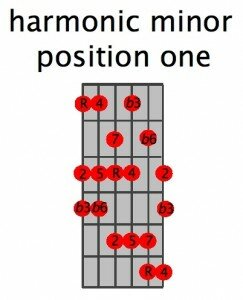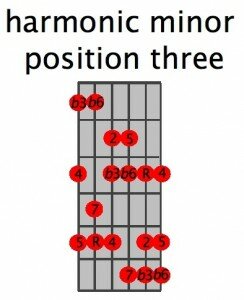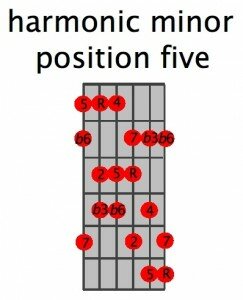
As discussed in previous lessons, a scale is a collection of notes with certain steps or intervals between each note. It is these intervals that create the sound of each scale. Thus, if we alter these intervals we have the option of changing the sound of the scale. With the natural minor scale we have the purest minor scale we can get. The notes of the scale and the intervals between each note are listed in the diagram below:

If we alter the seventh note from a minor 7th to a major 7th, we change the scale from a natural minor to a harmonic minor scale. By altering the seventh note to a major 7th we create an interval of one and a half tones between the minor 6th and the now major 7th. It is this interval that creates the sound of the harmonic minor scale. Take a look at the diagram below to see the step pattern of the harmonic minor scale:

Next, take a look at the two videos to hear the difference between an A natural minor scale and an A harmonic minor scale. You should hear that by altering the seventh note you end up with quite a different sounding scale!
Below you have the seven shapes of the Harmonic minor scale. For the purpose of the TAB they have been written out in the key of A minor. Make sure as you learn each position you try and memorise the shape to make it easier for yourself when you come to transpose them into other keys:
A Harmonic Minor Scale Position One:

A Harmonic Minor Scale Position Two:

A Harmonic Minor Scale Position Three:

A Harmonic Minor Scale Position Four:

A Harmonic Minor Scale Position Five:

A Harmonic Minor Scale Position Six:

A Harmonic Minor Scale Position Seven:

As with all the other scales we have learnt, you can transpose these positions into other keys quite easily. Simply match up the root notes in each position with the root note of the key you are looking for. Practice transposing these scales using the random key finder below.
RELATED Introduction to Guitar Scales
image credit – dgrinbergs